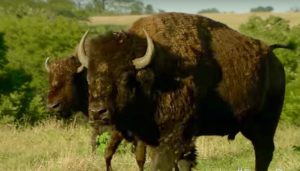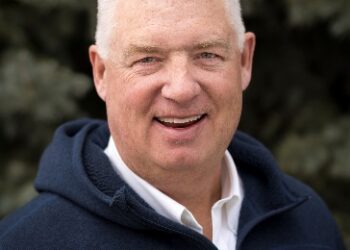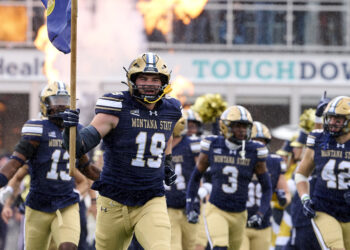
By Todd Wilkinson EBS Environmental Columnist
In his heyday, some considered him a local folk hero in government uniform. Others were not so smitten. The name Robert Bob “Action” Jackson still summons mixed reactions across the Greater Yellowstone region.
Jackson, a retired backcountry ranger who spent more than 30 years in Yellowstone, became best known for fighting wildlife poachers in the remote Thorofare district.
Today, his name still remains a cuss word for Wyoming outfitters, whom he claimed were illegally dumping salt licks next to Yellowstone’s southern boundary to lure trophy elk out of the park onto the firing lines of their fat cat hunting clients.
But that is old history. It turns out that for most of the while Jackson served as a part-time ranger in America’s oldest national park, he was also, less triumphantly, growing his own bison herd on the tallgrass prairie of his native Iowa.
Between the observations he made of bison in Yellowstone, and his own raising of animals for profit and putting healthy meat on dinner tables, he says he had an epiphany. Not a single lightning bolt moment, but several.
Paying attention to how bison organize themselves on the landscape, he started recognizing patterns of order. He noticed subherds within herds, satellite groups spinning off from the main mass of animals, and distinctive family structure.

Clanship, Jackson says, serves as a nucleus for holding herds together and shaping bison behavior. Wildlife biologists who regard bison as soulless creatures, devoid of emotion, a longing for kinship, and distinctive ways of relating to home territories have got it all wrong, he says.
Jackson says that scientists and by extension their employers, need to open their minds to thinking about bison beyond cold, analytical empiricism.
Like Jackson’s previous indictment of big game outfitters, his claims about bison, now aimed at government land management agencies, the livestock industry, land grant universities, and fellow bison ranchers, are sure to spark public debate.
Jackson says that if the National Bison Range, National Elk Refuge, Grand Teton Park, Yellowstone, the state of Montana, and private ranchers were willing to restore “bison culture” into herds, there would be fewer conflicts.
It isn’t wise to hunt bison populations willy nilly, he says. Non-strategic targeting only results in added chaos and stress. e adds that across the West today there are only a couple examples of true bison culture left.
Jackson claims that one bison subgroup in Yellowstone, the Mirror Plateau-Pelican Valley herd, still maintains its original behavior characteristics that predate the slaughter of bison on the Great Plains in the 19th century.
Discussions about one day depopulating Yellowstone of its bison, in order to create a buffalo herd that is free of brucellosis, is a serious threat to the integrity of the Mirror-Pelican animals, he says. Jackson further insists that any attempt to eradicate brucellosis from a wild ecosystem, while failing to consider the abundance of the organism in elk and other animals, is pure folly.
Only part of Jackson’s critique is scathing. He explains how, while raising 400 bison on his ranch, he developed a thriving business, and he shares insights to prove that there is an emotional component in the relationships between bison mothers and calves, aging siblings, and elderly “grandmothers” and “grandpas.” He also addresses how he gets past the apparent ethical contradiction of bonding with his animals and then killing them to feed humans.
It’s the kind of stuff one never reads about in scientific papers, perhaps for good reason, yet for ranchers who claim to have a special attachment to animals in their herds, what Jackson says may hold some resonance.
“What I am talking about is attaining a sense of peace with the idea of consuming an animal that, in many ways, we are equal to and to a certain degree dependent upon,” he says. “I want a marketplace that has a conscience.”
At the very least, in light of the political morass affecting many public bison herds and the desires of some to restore bison across the Great Plains, debating Action Jackson’s ideas can’t hurt.
Todd Wilkinson, founder of Mountain Journal (mountainjournal.org), is author of “Grizzlies of Pilgrim Creek” about famous Greater Yellowstone grizzly bear 399 featuring 150 photographs by Tom Mangelsen, available only at mangelsen.com/grizzly. His profile of Montana politician Max Baucus appears in the summer 2017 issue of Mountain Outlaw and is now on newsstands.














